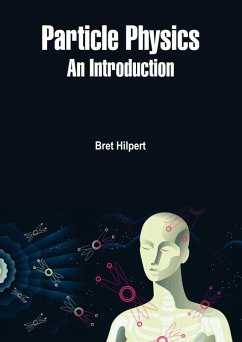This book aims to explain, to a scientific audience, the story of the microworld over the last decade. The way of telling the story is largely chronological, but with reversion to logical subject divisions where appropriate. Although the main logical connections are mentioned, no attempt has been made to keep an accurate history of the development. Part 0 takes up the story at the turn of the century when physics was first beginning to glimpse the remarkable nature of ordinary matter. Essential elements for understanding the microworld are introduced next: the theories of special relativity and quantum mechanics. Immediately the two are combined in relativistic Introducing Quantum Theory which is the inescapable language of modern microphysics. Part 1 examines, in turn, each of the four separate forces currently believed to govern all observed phenomena in the known universe, and goes on to describe the beginnings of Particle Physics: An Introduction proper with the discoveries of the muor.The story then progresses on to high-energy hadron physics (physics related to the pion and the proton), which dominated the world of Particle Physics: An Introduction. This was the logical extension of nuclear physics but it did not reveal any new fundamental insights (apart from the plethora of hadrons).Parts 3 and 4 describe the physics of the weak nuclear force which had been evolving from the study of nuclear b decay. The discovery of parity violation in the weak interaction provided the impetus for a better theoretical understanding and this led eventually to the modern gauge theory of the weak force, which is described in Part 5. This is the first of the essentially modern topics described in the book. The experiments, which are described in Part 6, provided a first indication of point-like objects within the proton and so led to the idea that such objects (called quarks) may be more than just mathematical constructs required to lend some order to the patterns of the multitudinous hadrons. The splendidly named `quantum chromodynamics', described in Part 7, offers a good description of the quarks' behaviour in some circumstances and benefits from sharing the same method of formulation as the earlier weak interaction gauge theory. The best class of reactions in which to observe the behaviour of quarks, and thus to test quantum chromodynamics, is electron-positron annihilation and this is described in Part 8. Over the last three decades these reactions have allowed the discovery of two new types of quark and one new lepton (a heavier relation of the electron and the muon) and have provided firm evidence for the validity of quantum chromodynamics. Part 9 then goes on to describe various theories which attempt to unify the description of the various forces of nature within the framework of a 'grand (or super) unified gauge theory'.
Dieser Download kann aus rechtlichen Gründen nur mit Rechnungsadresse in A, B, BG, CY, CZ, D, DK, EW, E, FIN, F, GR, HR, H, IRL, I, LT, L, LR, M, NL, PL, P, R, S, SLO, SK ausgeliefert werden.


